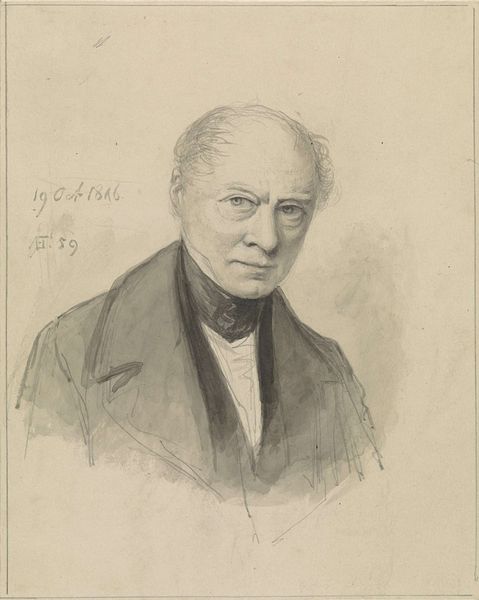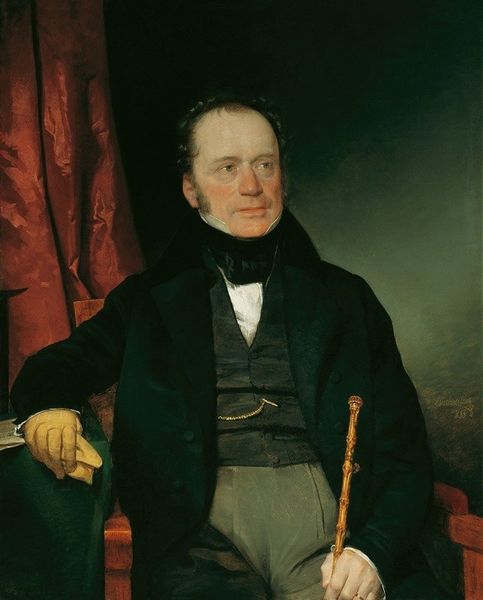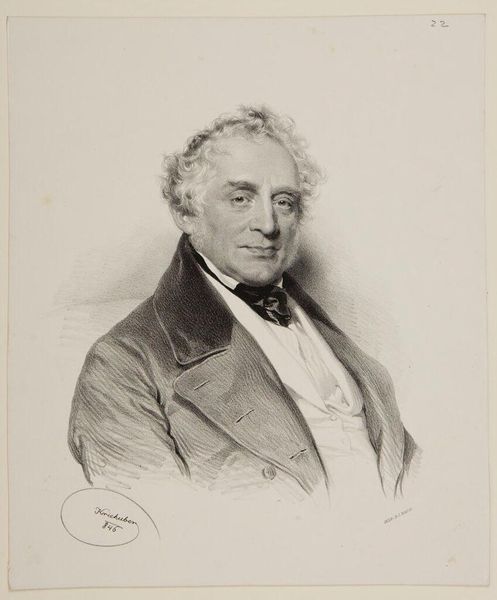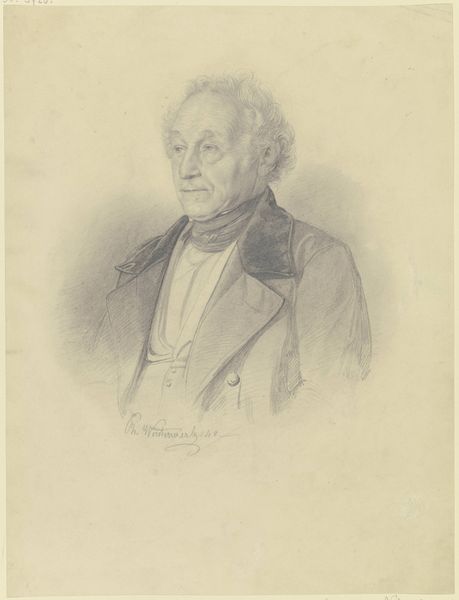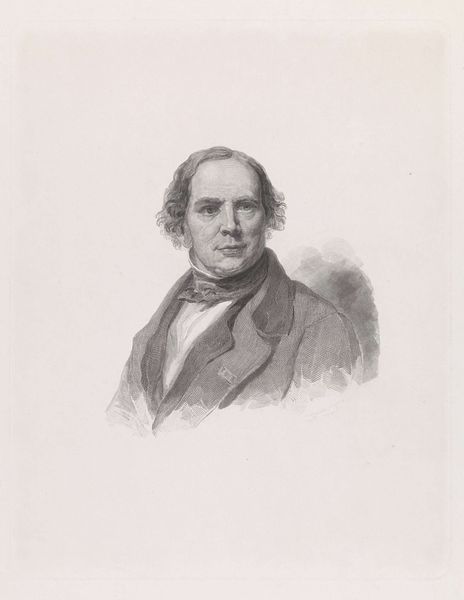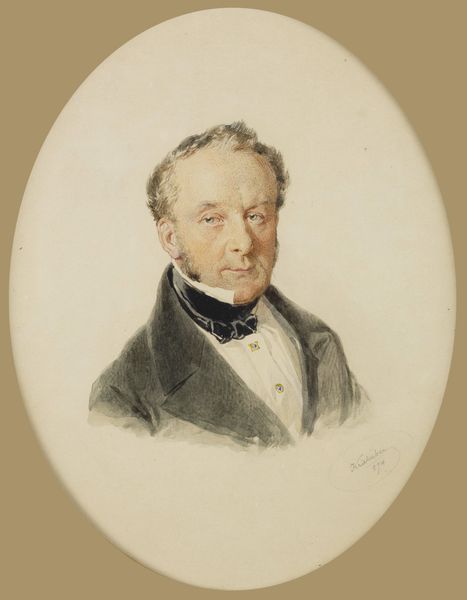
Copyright: Public Domain: Artvee
Editor: Here we have Konstantin Makovsky's "Portrait of the Artist's Father, Egor Ivanovich Makovsky," painted in 1859, using oil paints. It's quite a striking oval composition. There's an immediate formality, and the subdued color palette creates a sense of intimacy, even sadness. What can you tell me about this work from a formalist perspective? Curator: Indeed. Note how the artist structures the composition: the subtle asymmetry balances the strong verticality implied by the figure's posture. The use of chiaroscuro--that dramatic contrast between light and dark--does less to reveal than to conceal. Where are your eyes drawn? Editor: Initially to his face, then to the stark white of his collar which provides contrast and separates the face from the body and clothes, I suppose? Curator: Precisely. The high collar acts as a visual barrier, suggesting a psychological distance, as does the severe symmetry of the eyes. Note the texture, particularly the visible brushstrokes in the background. Makovsky is not attempting to create an illusion; the materiality of the paint itself is acknowledged. The somber tonal arrangement contributes significantly to the subject’s psychological presentation. Editor: So, by focusing on the artistic elements like light, color and shape, we learn the importance of the father and the relationship Makovsky had with him, instead of reading the painting like a traditional historical or social study. I will make sure that is conveyed to our visitors. Thanks. Curator: My pleasure. Let the painting itself speak and we often discover new possibilities within art’s semantic depth.
Comments
No comments
Be the first to comment and join the conversation on the ultimate creative platform.
